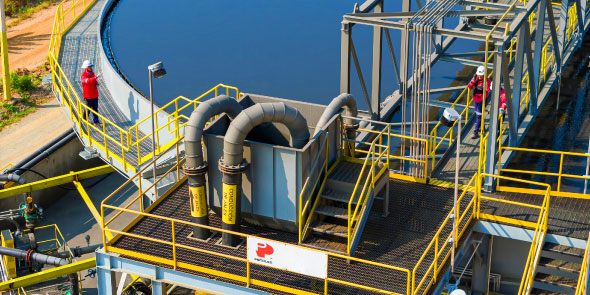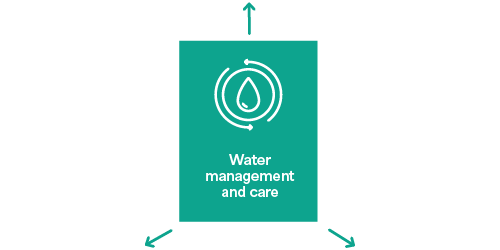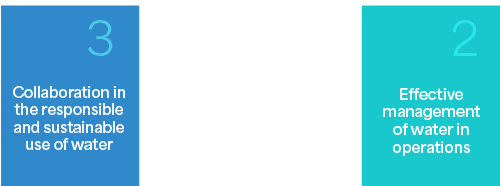Responsible, effective handling of the sites where waste from our mining and metallurgical processes is stored, is indispensable for earning and maintaining the trust of our stakeholders and executing our business strategy. Our commitment is to establish a process for responsibly managing these resources based on best engineering and governance practices.
Site
management
First line
of defense
Corporate
tailings
team
Second line
of defense

External
reviewers
Third line
of defense
Group-level
oversight
Fourth line
of defense

Impacts and risks management
We apply the following basic principles to achieve a culture of safe tailings management throughout our facilities’ lifecycle:
- Accountability, responsibility, and competence: The associated responsibilities and competencies are defined to support identification and management of the facility’s risks.
- Planning and resourcing: The financial and human resources needed to ensure continuous management and governance are kept available throughout the life cycle of the facility and its resources.
- Risk management: Includes the identification of risks associated with the facility, an appropriate system for control, and verification of performance targets. To control risks, we adopted the “critical controls” approach (more information on this approach in the Safety section).
- Change management: The risks associated with possible changes are evaluated, controlled, and communicated to avoid inadvertently compromising the safety of the facilities.
- Emergency preparedness and response: Processes for recognizing and responding to imminent failures in the facilities and mitigating the impact of a potentially catastrophic failure.
- Review and assurance: Internal and external processes for review and assurance so the facility’s risk controls can be comprehensively evaluated and continuously improved.
- Significant community involvement: We engage with communities to address their questions and concerns, and conduct visits so they can learn about these infrastructures and responsible operating practices.












